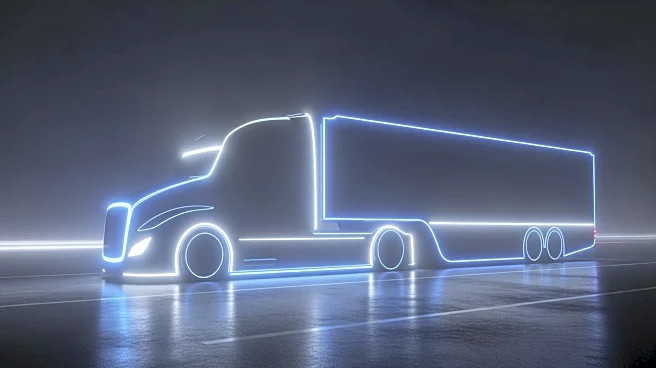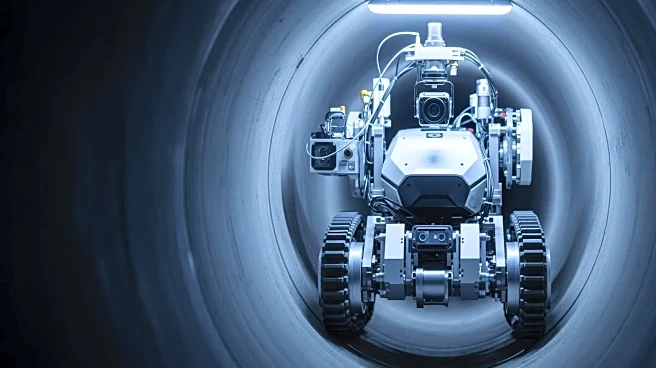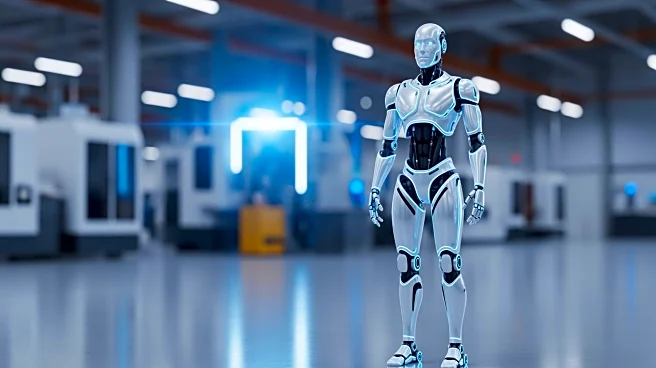What's Happening?
Brightpick, a company specializing in AI-powered robotic automation for warehouses, has announced that its Autopicker robots can now facilitate 'lights-out' order fulfillment. This development allows warehouses to operate
continuously, even during night shifts and weekends, without human intervention. The Autopicker robots autonomously pick and buffer orders overnight, ready for packing and shipping at the start of the next shift. This innovation is expected to increase warehouse throughput and accelerate order delivery. Brightpick's software upgrades, including Physical AI and picking-in-motion, enable these robots to operate with human-like dexterity, using advanced 3D vision and force-sensing grippers. The robots navigate aisles and shelves using LiDAR sensors and AI, even in low-light environments. Brightpick's Intuition AI software coordinates the robots as a fleet, ensuring optimal task assignment in real-time.
Why It's Important?
The introduction of 'lights-out' order fulfillment by Brightpick's Autopicker robots represents a significant advancement in warehouse logistics. By eliminating the need for overnight staffing, companies can extend their operating hours without incurring additional costs, thereby maximizing productivity and investment value. This is particularly beneficial during peak seasons, such as holidays, when staffing challenges are most pronounced. The ability to operate continuously enhances delivery speed and customer satisfaction, providing a competitive edge in the logistics industry. Furthermore, the Robots-as-a-Service (RaaS) model offered by Brightpick allows for affordable deployment, reducing financial risk and enabling faster return on investment. This model supports scalability and flexibility, making advanced automation accessible to a broader range of businesses.
What's Next?
Brightpick's Autopicker robots are expected to be adopted by more warehouses seeking to optimize their operations. As the technology proves its effectiveness, it may lead to broader implementation across various sectors within the logistics industry. Companies might explore further integration of AI-driven solutions to enhance efficiency and reduce labor costs. Additionally, Brightpick's RaaS model could encourage other robotics companies to offer similar flexible deployment options, potentially transforming the landscape of warehouse automation. Stakeholders, including logistics firms and retail companies, will likely monitor the impact of these robots on operational efficiency and customer satisfaction, potentially influencing future investment decisions in automation technologies.
Beyond the Headlines
The deployment of AI-powered robots like Brightpick's Autopicker raises important considerations regarding the future of labor in logistics. While automation can significantly reduce operational costs and improve efficiency, it also poses challenges related to workforce displacement. Companies and policymakers may need to address the implications of reduced demand for human labor in warehouses, considering retraining and upskilling initiatives to support affected workers. Additionally, the ethical dimensions of AI decision-making in logistics, such as ensuring fair and unbiased operations, will require ongoing attention. As automation becomes more prevalent, the industry must balance technological advancement with social responsibility.













